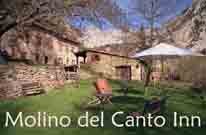These days the water reservoir of the river Ebro is a hot spot for birdwatching.

It is not difficult to make a route in a day and to see near 50 species of birds.
Some of them considered Rare Birds in Spain and very rare others in the north of the Iberian peninsula.
Waders, Herons, Gulls, but mainly birds of the Anatidae family.
Remarkable birds:
Pectoral Sandpiper (Calidris melanotos).
There has been a great arrival from these birds to many places of Spain (to see analysis in Rare Birds in Spain Blog). A bird registered in the water reservoir.
Egyptian Goose (Alopochen aegyptiaca). A bird, although the presence of this species can indicate that it is of captivity, have already been several the homologations of this species in the peninsula.
Smew (Mergellus albellus). Another species of doubtful origin, with many possibilities of natural origin.

Smew (Mergellus albellus) photo by Manuel Estébanez
Red-knobbed coot (Fulica cristata). It is not the first registry in the north of Spain, before has been observed some bird in Galicia. But very rare bird in the north of spain.

Red-knobbed coot (Fulica cristata) by Manuel Estébanez
Ruddy Shelduck (Tadorna ferruginea): Three spectacular birds. Birds of uncertain origin too.

Ruddy Shelduck (Tadorna ferruginea)
Common Shelduck (Tadorna tadorna): Four birds.



Common Shelduck below and Ruddy Shelduck above
Red-crested Pochard (Netta rufina). 450 birds recorded near the village of Cabañas de Virtus.
Historically this water reservoir has been a place chosen by thousands of Red-crested Pochard as to moult site.
Without justified cause, for years, the number of Red-crested Pochard has been littler, years with only possible to find four or six birds.
We hope starting from this year, they return in great flocks.

Red-crested Pochard (Netta rufina) Part of the flock.
Thanks to Manuel Estébanez, you can find more photos of him
here,
here and
here


































